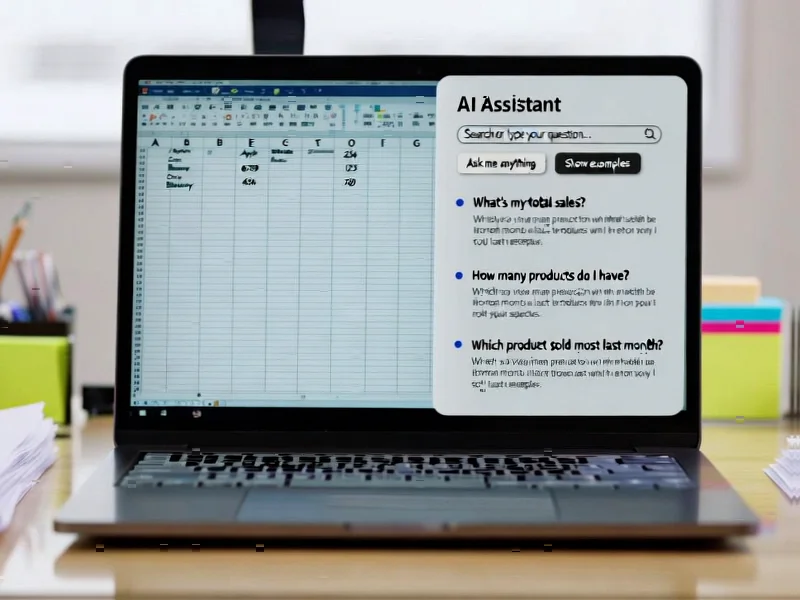According to Business Insider, Meta CEO Mark Zuckerberg dropped two spots on Bloomberg’s Billionaires Index after the company’s quarterly earnings report sent its stock sliding nearly 11%. Zuckerberg lost approximately $29.2 billion overnight, leaving him with $235 billion and pushing him to fifth place behind Amazon’s Jeff Bezos and Alphabet’s Larry Page. The decline came after Meta revealed it could spend $70 billion to $72 billion on AI capital expenditures in 2025, up from previous guidance, with CFO Susan Li indicating spending will climb even higher in 2026. During Wednesday’s earnings call, Zuckerberg defended the aggressive spending, stating that even in the “very worst case,” Meta would have “pre-built for a couple of years” rather than risk being caught short on compute capacity when the next wave of AI breakthroughs arrives. This dramatic market reaction highlights the growing tension between tech leaders’ AI ambitions and investor patience for massive capital outlays.
Table of Contents
The AI Infrastructure Arms Race
What we’re witnessing is an unprecedented infrastructure arms race that goes far beyond typical technology investments. Meta’s planned $70+ billion in AI capital expenditures represents one of the largest concentrated infrastructure builds in corporate history, comparable to building multiple hyperscale data centers simultaneously. Unlike previous technology cycles where companies could gradually scale successful products, the current artificial intelligence landscape demands massive upfront investment in GPU clusters, data centers, and specialized talent. The fundamental challenge is that AI infrastructure has a much shorter useful life than traditional data center equipment – what’s cutting-edge today may be obsolete in 18-24 months given the rapid pace of AI model development.
Zuckerberg’s High-Stakes Betting Pattern
This isn’t the first time Mark Zuckerberg has made massive, conviction-driven bets that initially spooked investors. The metaverse investment cycle provides a cautionary parallel – in 2022, Meta’s shares plunged about 24% after the company missed earnings targets while Zuckerberg pledged billions more into virtual reality infrastructure. That bet ultimately wiped out approximately $100 billion from his wealth at the time. What’s different about the current AI spending spree is the competitive landscape: unlike the metaverse where Meta had limited competition, every major tech company is racing to build AI capacity simultaneously, creating potential for massive industry-wide overcapacity if adoption timelines don’t match expectations.
The Changing Investor Calculus
The market reaction reveals a fundamental shift in how investors are evaluating tech chief executive officer spending decisions. During the cloud computing boom, investors largely rewarded infrastructure investment as companies like Amazon and Microsoft demonstrated clear revenue growth from AWS and Azure. The AI infrastructure story is more complex – while cloud services had immediate enterprise adoption, many AI applications remain experimental or lack clear monetization pathways. Investors are increasingly questioning whether building proprietary AI infrastructure at this scale makes economic sense versus leveraging cloud providers, especially given the rapid commoditization of foundation models and the emergence of specialized AI cloud providers.
Broader Industry Implications
Meta’s stock decline, combined with Microsoft’s 3% drop following its own record $34.9 billion capital expenditure announcement, suggests we may be approaching an inflection point in the AI investment cycle. When multiple tech giants simultaneously announce massive spending increases only to see their stocks decline, it indicates the market is becoming skeptical of the “build it and they will come” AI narrative. The concern isn’t just about individual companies – if multiple tech giants are all building similar-scale AI infrastructure simultaneously, we could see significant industry-wide overcapacity that depresses returns across the sector. This could trigger a consolidation phase where only companies with the deepest pockets can sustain the investment pace.
The Strategic Dilemma Facing Tech Leaders
Zuckerberg’s “pre-built for a couple of years” comment reveals the core strategic dilemma facing tech leaders: the risk of being capacity-constrained during an AI breakthrough versus the risk of massive capital destruction from overbuilding. What makes this particularly challenging is the unpredictable nature of AI progress – breakthroughs could accelerate demand dramatically, or the technology could hit unexpected plateaus. The parallel to the telecom bubble of the late 1990s is concerning: companies overbuilt fiber optic capacity based on projected internet growth, leading to massive write-offs when adoption timelines stretched longer than expected. The critical difference is that AI infrastructure has faster depreciation cycles, meaning the financial impact of misjudging demand could materialize much more quickly.
Realistic Outlook and Market Impact
Looking forward, we should expect to see increasing divergence in how companies approach AI infrastructure. Some may pivot toward hybrid models combining owned infrastructure with cloud partnerships to maintain flexibility. The companies most at risk are those with significant consumer-facing businesses funding infrastructure bets – if advertising revenues face pressure during economic downturns, the ability to sustain massive AI capex could become constrained. The next 6-12 months will be critical: if concrete AI revenue streams don’t materialize to justify these infrastructure investments, we could see significant pressure on tech stock valuations beyond just the immediate market reactions we’ve witnessed this week.



